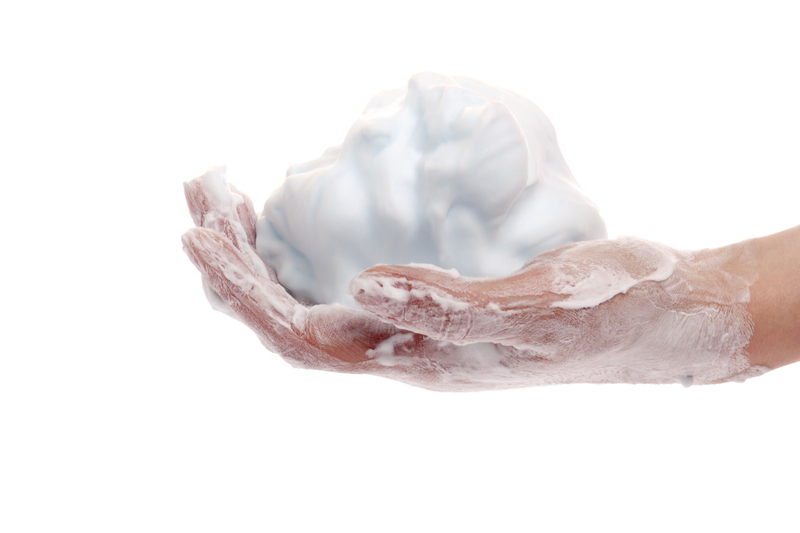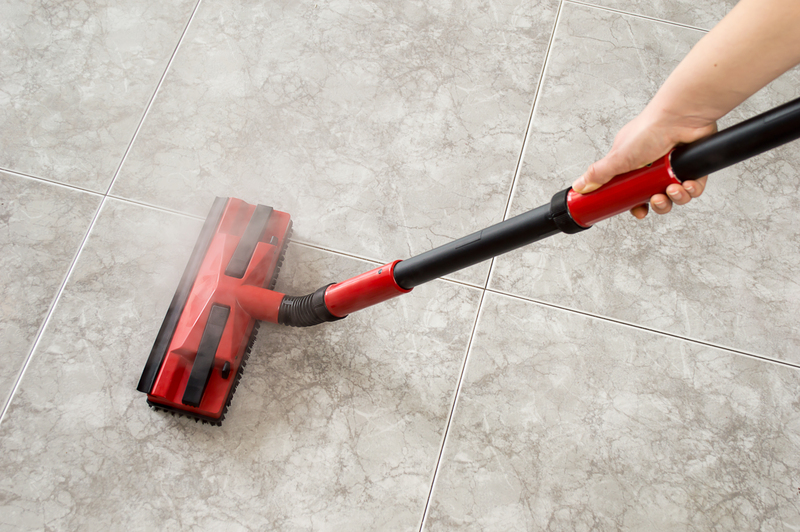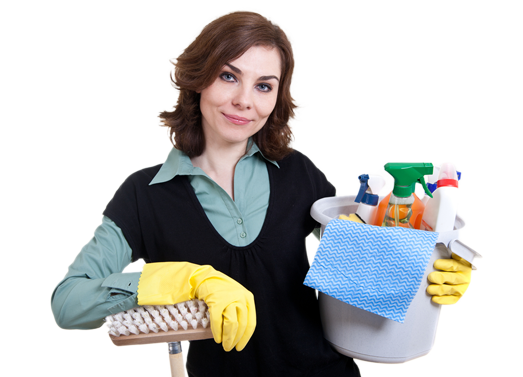Curtain Cleaning Done Right: A Helpful Guide
Posted on 20/09/2025
Curtain Cleaning Done Right: A Helpful Guide
When it comes to home decor, curtains play a vital role in setting the mood and ambiance of any space. However, many homeowners overlook the importance of regular curtain cleaning, which is crucial not only for aesthetics but also for maintaining a clean and healthy indoor environment. Whether you have elegant drapes, trendy sheers, or classic blackout curtains, proper curtain cleaning ensures they look their best and last for years.
In this comprehensive guide to curtain cleaning, you'll learn everything from identifying the right cleaning method for your fabric to stain removal, DIY tips, and professional cleaning solutions. Let's ensure your drapes remain dazzling and dust-free!
Why Curtain Cleaning is Essential
Many people underestimate the significance of routine curtain maintenance. Here's why cleaning your curtains should be a priority:
- Dust and Allergen Removal: Curtains often act as filters, trapping dust, pollen, and allergens, which can affect indoor air quality and exacerbate allergies.
- Aesthetic Appeal: Clean curtains enhance the beauty of your rooms, making the colors pop and giving your space a fresh feel.
- Fabric Longevity: Regular cleaning prevents dirt buildup that can weaken and discolor curtain fabric, helping them last longer.
- Odor Control: Fabric absorbs cooking smells, smoke, and humidity. Washing your curtains eliminates unpleasant odors.

Types of Curtains and Their Specific Cleaning Needs
Not all curtains are created equal. The correct curtain cleaning technique depends largely on the fabric and style. Below is an overview of popular types and their cleaning requirements:
1. Sheer Curtains
- Lightweight and delicate
- Usually require gentle hand-washing or machine washing on a delicate cycle
- Best to air dry to preserve shape and prevent snagging
2. Heavy Drapes (Velvet, Brocade, etc.)
- Often found in formal living or dining spaces
- Generally require professional dry cleaning due to the fabric's heaviness and structure
- Vacuum regularly with a soft brush attachment between washes
3. Cotton and Linen Curtains
- Durable and easy to care for
- Most are machine washable, but always check for colorfastness!
- Press with a warm iron if wrinkled
4. Synthetic Curtains (Polyester, Microfiber)
- Resistant to wrinkles and shrinking
- Typically safe to wash in a machine and tumble dry low
- Check tags for any special washing instructions
Step-by-Step Guide: How to Clean Curtains at Home
Tackling
1. Read the Care Label
Always start by checking the curtain's care instructions. The manufacturer's label provides crucial information about allowed curtain cleaning methods and temperature settings.
2. Remove Hardware
Gently unhook your curtains from rods and remove any hooks, rings, or decorative elements.
3. Shake Off Loose Dust
Take your curtains outside and shake them well to dislodge dust and debris before laundering.
4. Vacuum Before Washing
Use your vacuum cleaner's upholstery attachment to remove pet hair and surface dust. This prevents particles from embedding deeper during washing.
5. Choose the Right Washing Method
- Hand Washing: Ideal for delicate sheers and lace. Soak in cool or lukewarm water with a mild detergent, gently agitate, rinse, and lay flat to dry.
- Machine Washing: Use a gentle cycle, cold water, and mild detergent. Wash similar colors together.
- Dry Cleaning: For velvet, wool, or curtains with interlining, opt for professional cleaning to avoid shrinkage and damage.
6. Drying Your Curtains
- Air Dry: Most curtains benefit from air drying. Hang them on a clothesline or over a shower rod to drip dry.
- Tumble Dry: For sturdy fabrics, use a low-heat tumble dryer setting and remove before completely dry to prevent wrinkles.
- Avoid direct sunlight for colored fabrics to prevent fading.
7. Ironing and Rehanging
If needed, iron the curtains on the recommended setting. Smooth out wrinkles while the fabric is slightly damp for best results. Rehang the curtains and admire your beautifully refreshed window treatments!
Spot Cleaning: Stain Removal Tips for Curtains
Spills and stains can mar even the most luxurious drapes. Here's how to remove common stains and perform spot cleaning for curtains:
- Identify the Stain: Different stains require different treatments; acting quickly is vital!
- Blot, Don't Rub: Use a clean, white cloth to blot up spills, absorbing as much as possible without spreading the mess.
- Homemade Stain Removers: For organic stains, mix water with a small amount of dish soap. For ink or wine stains, blot with rubbing alcohol or a vinegar-water solution.
- Test First: Always test any solution on a hidden area to ensure it does not damage or discolor your curtain fabric.
- Rinse and Pat Dry: After treating the stain, blot with cool water to remove residue, then press with a towel to dry.
How Often Should You Clean Curtains?
Regular cleaning is the best defense against unwanted buildup. Frequency depends on several factors:
- Every 3-6 Months: If you live in a high-traffic or urban area, or if household members have allergies.
- Once a Year: For those in low-dust environments or with less-sensitive occupants.
- Vacuum monthly and address stains as they occur for best results.
Professional Curtain Cleaning Services: When to Call the Experts?
Sometimes, DIY curtain cleaning isn't enough. Consider professional services if:
- Your curtains are made of velvet, wool, or silk
- They have intricate pleating, interlining, or embellishments
- You need deep cleaning for stubborn odors, grease, or mold
- Your curtains are heavily soiled or haven't been cleaned in years
Professionals use advanced techniques such as steam cleaning, specialized dry-clean-only products, and fabric-safe detergents for a thorough clean without risking damage. Though this option requires an investment, it preserves fragile or costly drapes and saves you time and effort.
Eco-Friendly Curtain Cleaning Solutions
For environmentally conscious homeowners, you can maintain clean curtains while caring for the planet. Here's how:
- Choose Biodegradable Detergents: Opt for plant-based, phosphate-free cleaners.
- Hand Wash When Possible: Reduces water and energy usage compared to machine cycles.
- Sun Drying: Save energy by air-drying curtains rather than using electric dryers.
- Professional Green Cleaners: Some commercial services offer non-toxic, eco-friendly cleaning solutions for drapes.
DIY Curtain Cleaning Tips and Tricks
- Quick Freshening: Use a fabric refresher spray between washes to keep curtains smelling delightful.
- Regular Dusting: A lint roller or handheld duster can remove dust from curtains and blinds in seconds.
- Steaming: A handheld garment steamer is perfect for deodorizing and smoothing wrinkles without uninstalling your curtains.
- Vacuum Weekly: Prevent dust buildup by vacuuming your curtains as part of your regular cleaning schedule.
Common Curtain Cleaning Mistakes to Avoid
To ensure your curtain cleaning practice is truly done right, steer clear of these mistakes:
- Skipping the Label: Each curtain has unique care requirements; ignoring the label can lead to shrinkage or color bleeding.
- Overloading the Machine: Don't overcrowd the washing machine--curtains need space to move for thorough cleaning.
- Using Harsh Chemicals: Avoid bleach or strong detergents unless recommended.
- Drying in Direct Sunlight: Prolonged exposure can fade colors and weaken fibers.
- Not Testing Stain Removers: Always spot-test to avoid irreversible damage.

Frequently Asked Questions About Curtain Cleaning
Can I wash all types of curtains in a washing machine?
Not always! Some materials, like velvet, silk, or heavily lined curtains, require dry cleaning. Always read the care instructions first.
How do I rid curtains of mold or mildew?
Take action quickly! Brush away loose spores outdoors, then treat with a mix of water and vinegar or hydrogen peroxide. Consider professional cleaning for severe cases.
Will curtain cleaning fade the colors?
Proper technique prevents fading. Use cold water, gentle detergents, and avoid direct sunlight during drying.
How do I remove wrinkles from freshly washed curtains?
Hang curtains when they are slightly damp and gently pull the fabric taut. Use a steamer or iron as instructed on the care label.
Do blackout curtains need special cleaning?
Yes, blackout curtains often have a rubber backing that can degrade with heat or harsh detergents. Use a gentle hand wash or spot clean the backing, and avoid tumble drying.
Conclusion: Enjoy Fresher, Cleaner Curtains
Whether you have airy sheers or luxurious designer draperies, regular curtain cleaning is key to a healthy and attractive home. By understanding your curtain types, following proper cleaning procedures, and knowing when to turn to the professionals, you can keep your drapes looking stunning all year round.
Make curtain care part of your cleaning routine, and enjoy the benefits of a refreshed atmosphere, reduced allergens, and window treatments that look as good as new!
Ready to transform your curtains? Try these tips today, and experience the difference of curtain cleaning done right!





